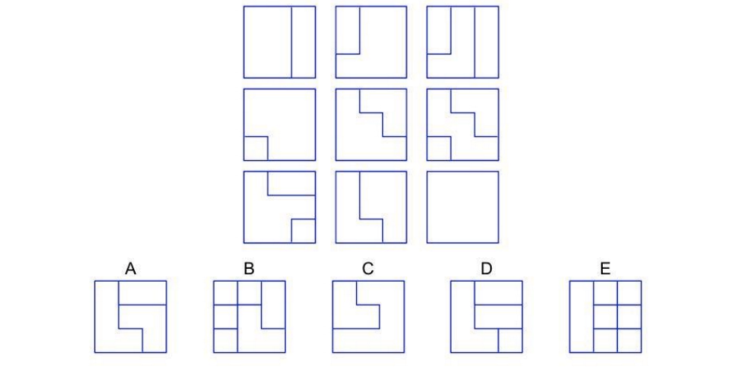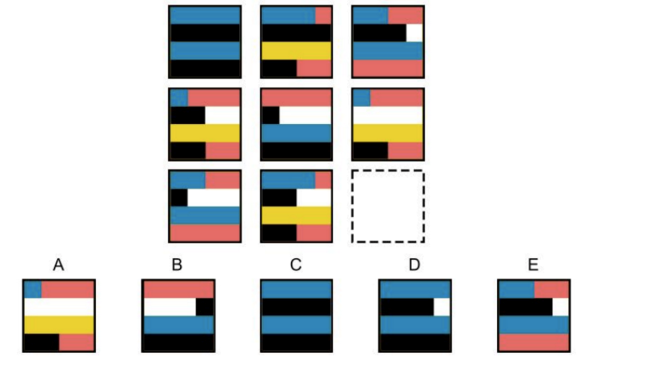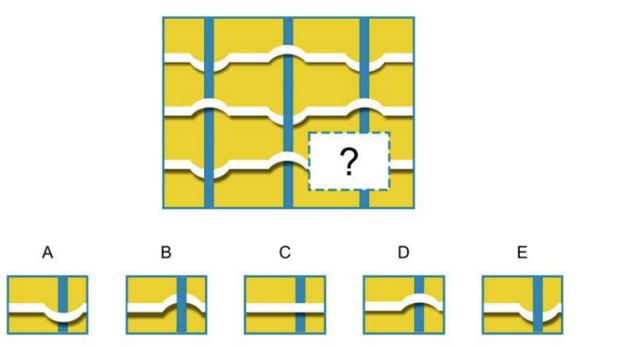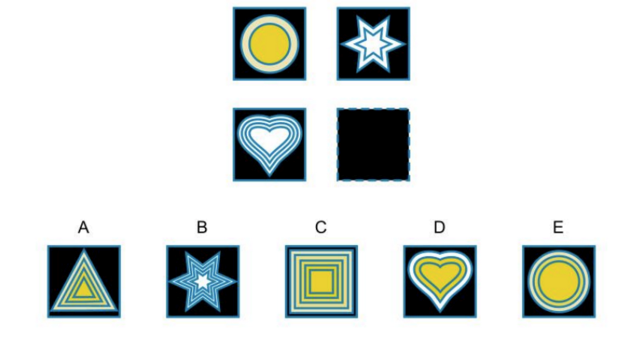NNAT 7th-8th Grade Sample Questions
The NNAT (Naglieri Nonverbal Ability Test) is a nonverbal test that is used to qualify kindergarten through 12th grade students for gifted and talented programs. The NNAT uses a nonverbal model for assessing students, as it utilizes shapes and figures to evaluate a student’s problem solving abilities. Similar to the OLSAT, the NNAT does not test a child on what he or she has learned in school, but instead, focuses on visual-spatial reasoning skills. The NNAT has become a popular test for admissions into gifted and talented programs, as it is used across various school districts throughout the United States. The most recent version of the NNAT is the NNAT3 which includes 48 questions that are broken down into four distinct question types. These question types include:
- Pattern completion
- Reasoning by analogy
- Serial reasoning
- Spatial visualization
Children in the seventh and eighth grades will undertake the NNAT Level F exam, encompassing pattern completion, reasoning by analogy, serial reasoning, and spatial visualization questions. Curious about the types of questions your child will encounter on the NNAT (Naglieri Nonverbal Ability Test) and NNAT 3 (Naglieri Nonverbal Ability Test, second edition)? Here are four examples provided below. For further practice, feel free to sign up for our 100 free practice questions.
NNAT 7th-8th Grade (Level F) Sample Questions
1) Spatial Visualization
Example #1:
Parent say to your child: “Look at this puzzle.” Point to the empty box and say “something is missing.” Point to the answer choices and say, “Which of these answer choices goes here?” Point back to the empty box when you say “here.”

2) Serial Reasoning
Serial Reasoning, also part of the NNAT, evaluates students’ capacity to analyze and forecast visual sequences. In this segment, students examine visual elements presented in rows and columns. Consequently, they must recognize patterns and transformations, ultimately predicting the next figure. This assessment encourages the application of logical relationships and rules to visualize the sequence’s progression, fostering critical thinking and analytical abilities.
Example #2:
Parent say to your child: Look at the boxes across the rows and up and down the columns. Do you see how they are related to each other? Can you find the answer that goes in the empty box so that the designs inside and rows and columns follow a pattern?

3) Pattern Completion
Pattern Completion of NNAT Test assesses a child’s ability to identify and complete visual patterns and sequences. In this section of the NNAT, students encounter a series of visual patterns or sequences, with one part missing. Subsequently, their task is to discern the underlying pattern and select the correct piece to complete the sequence. This assessment encourages students to recognize underlying relationships and apply logical reasoning, crucial skills for problem-solving and analytical thinking.
Example #3:
Parent say to your child: Look at the pattern on top. A piece has been taken out of it. Choose the piece below the pattern that goes where the question mark is in order to complete the pattern.

4) Reasoning by Analogy
NNAT Reasoning by Analogy involves assessing students’ ability to recognize and apply analogical relationships between visual elements and shapes. In this section, students encounter a series of visual elements or shapes arranged in a specific pattern. Consequently, their task is to identify and apply logical relationships between these visual elements to find the missing piece that completes the pattern. This assessment promotes nonverbal reasoning skills essential for problem-solving and analytical thinking.
Example #4:
Parent say to your child: Look at the figures on top. They go together in some way choose a figure from the answer row that goes with the figures on the bottom the same way the figures on top go together.

Answers:
1.) D
2.) D – Here we move 3 rectangles by reducing them in size. The upper blue rectangle is reduced completely in 5 steps, and after that it increases in the other 5 steps. The black rectangle also decreases but it starts from the third frame. The lower blue rectangle alternates with a gold rectangle. The lower rectangle is full black, half black with red, and full red.
3.) E
4.) A – Both figures have the same number of outlines
See if TestingMom.com supports your child’s test by your school district. If you don't see your child's school district listed, check with us! We have practice for other tests as well.



Tell us about your experiences
One Response
Geraldine
I thought it was fun, did confuse me at first but after examining it, it turned out to be easy.